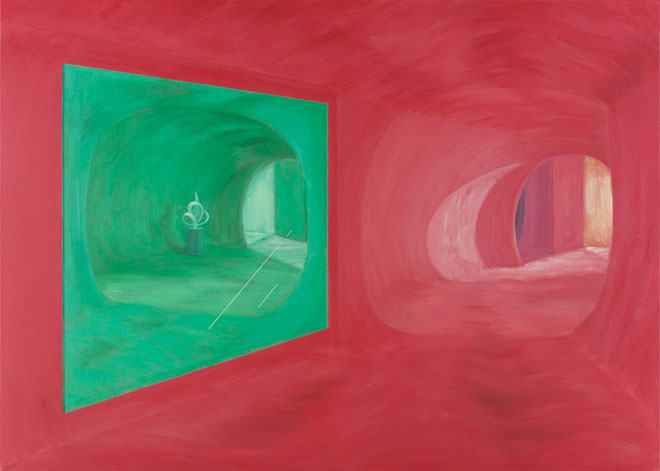
Shirley Wiitaaalo, Green Mirror with Sculpture, 1986. Oil on canvas. Purchase, 1989. Copyright Shirl Wiitaaalo, 2016.
Toronto in the 1970s and 1980s was a city growing into its international status. Along with the city’s boom came the social and political upheavals of the era; the Spadina Expressway protests, bath house raids and fights over pay equity, multiculturalism and social housing dominated the headlines. In the midst of this, a new generation of Toronto artists emerged, pushing the boundaries of sculpture, painting and photography and exploring new ways of art making including video, installation and performance. This fall, the Art Gallery of Ontario (AGO), revisits that complicated era with a wide-ranging display of artists and artwork. Toronto: Tributes + Tributaries, 1971-1989 opens on Sept. 29, 2016 and runs until May 2017, filling the entire fourth floor of the AGO’s Contemporary Tower.
Initiated by Andrew Hunter, the AGO’s Frederik S. Eaton Curator of Canadian Art, Toronto: Tributes + Tributaries, 1971-1989 is curated by Wanda Nanibush, Assistant Curator of Canadian and Indigenous Art. The title of the exhibition—a reference to the city’s many buried waterways—serves as a visual metaphor for the diversity of the art scene and its similarly buried histories.
Drawing heavily from the AGO collection and featuring more than 100 works by 65 artists and collectives, the exhibition will be accompanied by a live performance series, a film and video festival, as well as satellite installations throughout the Gallery.
“In the tension between these two works—one a critique of the art world’s star system, and the other a deeply personal, politicized performance—we see how substantially things changed in only two decades,” says Wanda Nanibush. “Throughout the 1970s and 1980s, issues of democracy, race, gender, sexuality, and colonialism made real headway in exploding the traditional art historical categories. In this period we see not only a plurality of voices emerging but the very definition of artistic practice expanding, encompassing publishing, theatre, performance and identity politics.”